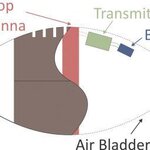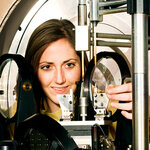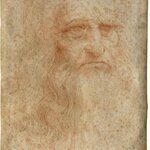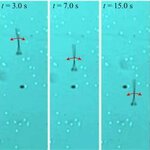Applied Physics

It doesn't happen often but there are times when its unclear if a football crosses the goal line for a touchdown. If a quarterback attempts a sneak, for example, and the line pushes forward, he may be under too many players to be seen.
All the referees can do is pull people off and look at where the ball is, though there is no idea if that's where it was when his knee touched the ground. A Disney Research team, in collaboration from NC State and Carnegie-Mellon, developed a system that can track a football in three-dimensional space using low-frequency magnetic fields.
Previous…

The Advanced Wonder Excitement Surprise Original Mechatronic Excellence lab is usually devoted to robot design but recently they took a break to go old school.
How old school? The 13th century, that's how old school.
Sandra Dunnebacke of the Impression 5 hands-on science and learning center sent us a trebuchet. That's right, a trebuchet. Nothing says fun to kids like using a hammer and nails and then the awesome power of physics to hurl objects in the kitchen, but a trebuchet takes that to the next level. If people have even heard of a trebuchet, they use it interchangeably with a…

By ‘caging’ and cooling water molecules
in carbon spheres
to study the change in orientation of the magnetic nuclei at the center of each hydrogen atom, researchers have been able to transform the molecule from one form of water to another.
Water molecules can exist as one of two isomers, depending on how the spins of their two hydrogen atoms are orientated: ortho, where the nuclear spins are parallel to one another, and para, where the spins are antiparallel. Scientists believe that any given molecule can transform from ortho- into para- spin states and vice versa, a process known as nuclear…

STFC’s Vulcan laser facility has recreated scaled supernova explosions to investigate one of the most energetic events in the Universe.
Supernova explosions, triggered when the fuel within a star reignites or its core collapses, launch a detonation shock wave that sweeps through several light years of space from the exploding star in just a few hundred years. But not all such explosions are alike and some, such as Cassiopeia A which is 11,000 light years from the Earth, show puzzling irregular shapes made of knots and twists.
To recreate a supernova explosion in the laboratory an…

Earlier this year, a team of students from Eindhoven went to Finland and built the world’s biggest ice dome, with a diameter of 30 meters.
Credit: Pykrete Dome team. Song: Youngblood Hawke - Stars (Hold On)
This next winter, another Eindhoven team wants to top that. They are going to make a 1:4 scale copy of Barcelona's Sagrada Familia in the town of Juuka , 40 meters high, in just three weeks.
“We could have just decided to build another, even larger, dome,”
Eindhoven University of Technology (TU/e)
lecturer and project leader Arno Pronk explains. “But in building terms the…

One of Leonardo da Vinci's masterpieces, a self-portrait, was drawn in red chalk on paper during the early 1500s. As you can imagine, a chalk drawing on paper from the Renaissance is in extremely poor condition.
Centuries of exposure to humid storage conditions and a lack of understanding about preservation has led to widespread and localized yellowing and browning of the paper, which is reducing the contrast between the colors of chalk and paper and substantially diminishing the visibility of the drawing - but a group of researchers from Italy and Poland are trying to help.
In Applied…

A team of researchers has developed sperm-inspired microrobots which can be controlled by oscillating weak magnetic fields.
The 322 micron-long robots consist solely of a head coated in a thick cobalt-nickel layer and an uncoated tail. When the robot is subjected to an oscillating field of less than five millitesla – about the strength of a decorative refrigerator magnet – it experiences a magnetic torque on its head, which causes its flagellum to oscillate and propel it forward. The researchers are then able to steer the robot by directing the magnetic field lines towards a reference…

Researchers of the Universitat Politècnica de València at the Campus de Gandia have designed and experimentally evaluated a new structure that permit the complete absorption of sound at a wide range of frequencies.
The best part is that they used conventional porous materials already common in the construction industry. No expensive metamaterials or mathematical wizardry.
The researchers demonstrated how the structure achieves extraordinary sound absorption using what might seem like a contradictory strategy - the sound attenuation increases when the quantity of absorbent material is…

What makes the perfect beer foam? Is it nucleation in the glass? Beer is well-traveled ground on Science 2.0 and that means beer foam has been covered as well.
The biggest advice. Be careful with the detergent you use to wash your glass. An already lipid-optimized brew will not benefit from extra fat left over by detergent.
Cornell food researchers focus on lipids too, barley lipid transfer protein No. 1, aka LTP1.
Bitter compounds found in hops, like iso-alpha acids, are important to brewers, says Cornell's Karl J. Siebert, principal investigator and author of "Recent Discoveries in Beer…

In light of recent results from the "world's longest experiment", spanning more than 90 years, at the University of Queensland, a group of researchers from Trinity College Dublin explain the background behind their own pitch-drop experiment in this month's Physics World and offer an explanation as to why their research hit the headlines in 2013.
Capturing the release of a drop of pitch – a thick, black, sticky material – from a funnel on camera seems mundane, yet created a storm of media interest last week for the Australian experiment, as it did over a year ago for the Irish one.…